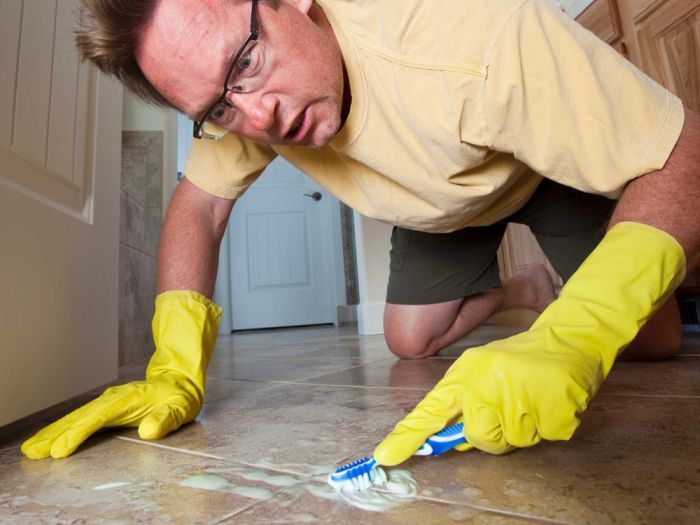Blog Post 10: The OCD (Obsessive Compulsion Disorder)
Previous 2 blogs were an attempt to provide information & create awareness about different types of PHOBIAS and remedial measures related to them. This blog attempts at providing information and creating awareness about OBSESSION and the mental status related to it. In broader terms, OBSESSION doesn’t much differ from PHOBIA. The fears related to some bad experience, a person, a thing or a situation are categorised under PHOBIA. But if the same fear gets transformed into some thing like disgust, it is called OBSESSION. And the effort of getting rid of it can take the form of a mental illness. In OBSESSION, the disgust is mostly associated with waste, dirt, cleanliness or tidiness. The most important difference between PHOBIA and OBSESSION is that in PHOBIA, once the situation of fear is averted, the person going through it gets calm & relaxed, but in OBSESSION the human cannot get rid of the feeling of disgust. The second major problem of OBSESSION is to clear the doubts that arise in the patient's mind. There is a possibility that the doubts arising in OBSESSION may also be related to lack of confidence or superstition.
For example:
1) Many women are accustomed to clean the kitchen or the utensils repeatedly. In some women, the obsession is so intense that the constant use of water for cleaning, leaves the skin desquamated.
2) Some people think that while stepping out of the house, the right foot should be put out first or else their entire day will get affected with problems.
3) Some people think that no temple in the course of their travel should be missed without seeking god’s blessings and if by mistake, any temple is missed then God will get angry.
4) Some students develop a mind set of writing every paper in the exam with the same pen or wearing a specific shirt for some important work or meeting, because the pen or the shirt is considered as a lucky charm.
5) Many people, if their legs touch anybody even accidentally, have a habit of apologizing by literally kneeling down and touching legs of the other persons if asking for forgiveness. Actually a simple SORRY is workable. Later they get obsessed so much that they cannot distinguish between living and non-living things. The person unknowingly starts apologizing even the non-living things repeatedly by touching the doors, tables, even slippers and shoes.
6) They keep checking again and again the locked doors or the locked cars.
7) Some people carry a mind set that if the beggar is not given alms, some bad omen can happen.
8) Keep cleaning or organising the house or things frequently.
Apart from this, people who are particular about strictness, discipline and perfection can also become victims of OBSESSION. The habit of repeatedly doing the same thing is an example of OBSESSION. When kids learn a new thing or they come across anything new, they have the desire to do the same thing again and again. Even after listening to a story repeatedly, they have the feeling of listening it again and again. This is also a type of OBSESSION.
OBSESSION is actually associated with thoughts. Many a times thoughts emerge against one’s will. But in COMPULSION, action is taken against one’s will. For example, once leaving the house after locking it, the developed suspicion of the house being not locked properly is a symptom of OBSESSION. Even after reaching halfway, the anxiety which compels the person to come back for reassurance, is a symptom of COMPULSION. In Psychology, when OBSESSION combines with COMPULSION, it is called OBSESSIVE COMPULSIVE DISORDER (OCD). Such patients require rather spend a lot of time to complete their work in the dilemma of assuring and reassuring, affecting their physical and mental energy.
Some examples of habits of people suffering from OCD:
1) Instead of enjoying or using the newly bought thing, people suffering from OCD spend their energy and time in carefully handling and protecting it without actually using it.
2) They become restless on noticing a single wrinkle on their already ironed clothes.
3) Instead of reading the newly purchased book, they engage themselves in taking care of the book by putting a good cover, keeping the pages straight without any folds.
4) They keep their cabins or rooms very well organized.
It is certainly important to be organised & disciplined in life. But anything in excess quantity is fatal. And if such symptoms are noticed in a person, then that person can be a patient of OCD.
Such people consider themselves very intelligent, knowledgeable and highly experienced. They can be self obsessed too. They prefer to do the work in their own way and on their own terms. Such people are not able to work together in the team because as a a team leader they create a tense atmosphere among their team members. These people are unable to accept other’s suggestions. Even if those suggestions are justified, they do not have the mind set to give it a thought for betterment. They get restless and and it may hurt their ego.
PHOBIC patients become calm after the fear-related thing, situation or time passes. But the OBSESSED patient, cannot get away from the thing they are obsessed with unless he/she fulfil their obsession. For instance, in case of a patient obsessed with cleanliness, he/she think that nothing can be cleaned completely, and even if it is cleaned, then the the filth will return again by means of air or the animals or outside things. They also think that the filth or infection related to it can also spread by touching others. That is why such people shy away from shaking hands or do not like to hug anyone.
In the third type of OBSESSION, wrong thoughts about other person, maybe a close friend, close relative, or even God arise in his/her mind. For example:
1) While praying, the idea of abusing the God may emerge in the mind of a very religious person.
2) Many times, mothers especially after delivery, while bathing their own small child, get terrible thoughts of drowning and killing them in the water. Due to such thoughts, their mind always remains restless, sad and depressed.
The diagnosis of such strange disorders is not yet understood and many psychologists are making amends on it. But like any other mental disorder, there are chances that the developed OBSESSION can be associated with childhood experiences. People obsessed with strictness & discipline are bound to have struggled with their parents in childhood. His/her parents may have mostly tried to keep them under control. So they develop that kind of mind set. When they grow up, as a habit, they too start making rules like their parents, expecting strictness and discipline from the people around them.
Although, people who show minimum symptoms do not like to accept it or come forward for treatment, and like anyother mental disorder the only key to get rid of it is ACCEPTANCE. If these symptoms increase then it can affect their day to day life. Although treatment of OBSESSION is not that easy. But recently, BEHAVIOUR THERAPY has shown very good results. In this therapy, instead of looking for the base of the patient's OBSESSION, an attempt is made to change or correct his misconduct. The attempt is to understand that the patient misconducts because of learning something wrong or due to the habit of doing something wrong. An attempt is also made to remove the anxiety that occurs in the COMPULSIONS due to OBSESSION. The patient is stimulated to face the fearful situation.
Yoga Therapy is also used as a part of healing in BEHAVIOUR THERAPY. For example, if a patient is afraid of the outside dirt entering his house, then in such a situation, he prefers to close the door and sit at home. As a part of treatment, such a patient is taught to calm his mind, first by lying in the SHAVASANA through yoga practice. Then he/she is asked to imagine themselves standing on the door post and visualize the surrounding view. The patient, as a habit, initially starts seeing the dirt and the filth outside the house.He/she gets restless, imagining the dirt or the filth coming in his/her house. As soon as he/she starts visualizing this, they asked to imagine a beautiful sea side view. The scene outside the house is then brought back to them. But due to the lack of restlessness, now by opening the door, that patient dares to get out of the house. Gradually, the fear of outside dirt or filth entering their house gets discarded from their mind. To a large extent, this therapy corresponds to PROGRESSIVE DE-SENSITISATION and ORIENTATION REFLEX therapy applied to overcome PHOBIA. This experiment is definitely not easy and requires continuous and regular practice.
The research states that OBSESSION's evidence is scarce compared to other PSYCHOSIS.
1 in 100 or 5-7 in 1000 suffer from PSYCHOSIS. For years, it was difficult to solve the problem of the disorder, but in the last several years, BEHAVIOUR THERAPY and new medicines, have certainly helped patients to gain control on their thoughts.
For blog related suggestions and comments, please select one of the three options:
01) Email at koonalblogs@gmail.com.
02) In the comment box located on the blog, comment as option, just enter your name in the Name / URL.
03) In the comment box on the blog, comment as option, select the Anonymous option.
Keep reading to know the complexities and mind set related to hysteria in the next blog titled The HYSTERIA. Till then stay safe and healthy, MENTALLY & PHYSICALLY 😊.
- (KD Blogs)
✍ © Kunal Deshpande.




Comments
Post a Comment